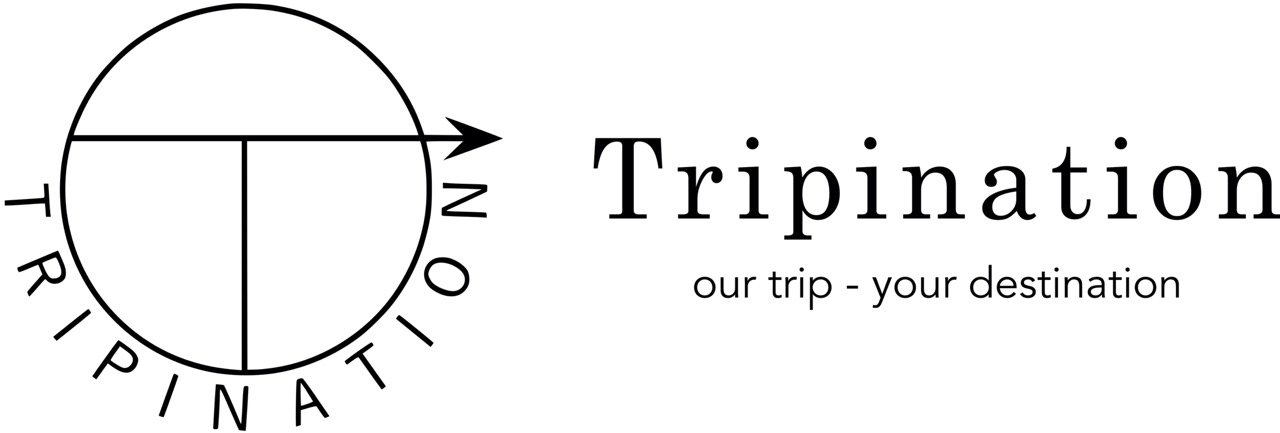With our trip to Istanbul, Türkiye, we got two city trips in one, so to speak. Istanbul’s location on two continents makes it special. For Europeans, Istanbul is the gateway to Asia and this is certainly true the other way around as well. After all, each gate can be entered from two sides. Istanbul is like the true version of Chalmun‘s Cantina from Star Wars and a sensory overload. Dive in and experience with us again four challenging and unforgettable days in the former Constantinople.
Our accommodation was located in the trendy and modern district of Beyoglu. We reached it from the airport with a pre-booked private shuttle via booking.com*. The Taksim Premium Hotel is more of a tiny motel and is perfect for a city getaway because of its location and amenities. Breakfast was next door at the Brew Lab, which was very cool. Starting the day with a view of the hustle and bustle of the streets is something we’ve always wanted to indulge in. The whole experience, punctuated with a really good coffee, was a great foundation for the rest of the day’s events.
Welcome, Pass, Card
There is a lot to see in Istanbul. In addition, you can enjoy free access and benefits with the respective card or pass. There are basically three such offers:
– Istanbul Welcome Card: Selected sights and access to public transportation (Istanbulkart) are included.
– Istanbul Tourist Pass: A variety of sights and services are included.
– Istanbulkart: Required to use public transportation in Istanbul.
In the end, we decided to use the Tourist Pass as a 3-day ticket because it covered all the activities and sights we had chosen in advance. However, here we must restrictively say that you should then deliver such a kamikaze program as we now describe. Otherwise, the relatively high price is not worth it. The Welcome Card had a too small selection of attractions for us, so we left this further unnoticed. We ignored the Istanbul Card for public transportation. This was unfortunately a mistake you should not make.
This is how you make kilometers
The Istanbul Card is a must when visiting Istanbul. You can purchase this card for a good Euro and can even use it as a group. The single trip costs about 0.40 euros with the Istanbulkart (otherwise double). The only thing you should then consider is your number of rides before charging the card. After that, this is the most convenient (and sometimes the only) way to actually travel in the city.
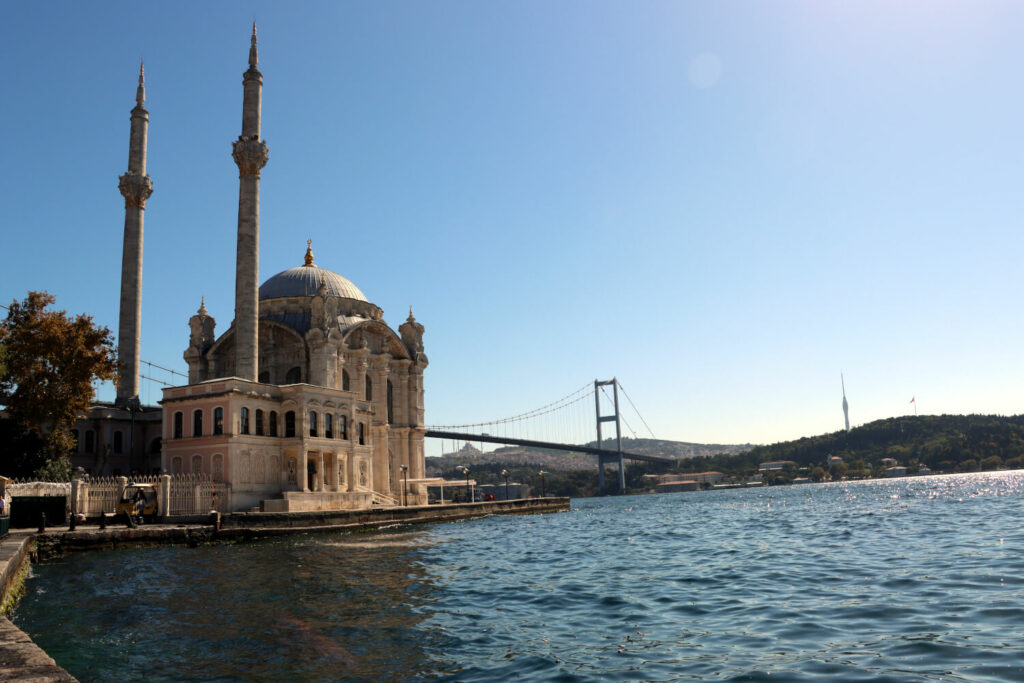
In fact, our plan A was to use cabs. This was foiled for two reasons. First, by the insane traffic, which consists of a viscous mass of vehicles from morning to night. Second, by the cab drivers themselves, who had little desire to chauffeur us from A to B and therefore charged outrageously high prices or showed us current traffic jam reports. No wonder, the number of cabs has remained comparatively the same since the 80s, where on the other hand the number of inhabitants has increased from 1 to 16 million.
Tourist Tourette
This unawareness coupled with the small carelessness in planning in advance led to a march on the first day of ultimately over 30 kilometers. This does not include the 4 kilometers that a cab took us in between (cost: about € 2). A bit jerky, but then we reached our first sight – Büyük Mecidiye Camii (Great Mecidiye Mosque). The mosque is photogenically located at the Bosphorus Bridge and at the foot of the Ortaköy district. Here, a photo was enough for us and then a detour into the great alleyways including a coffee stop.
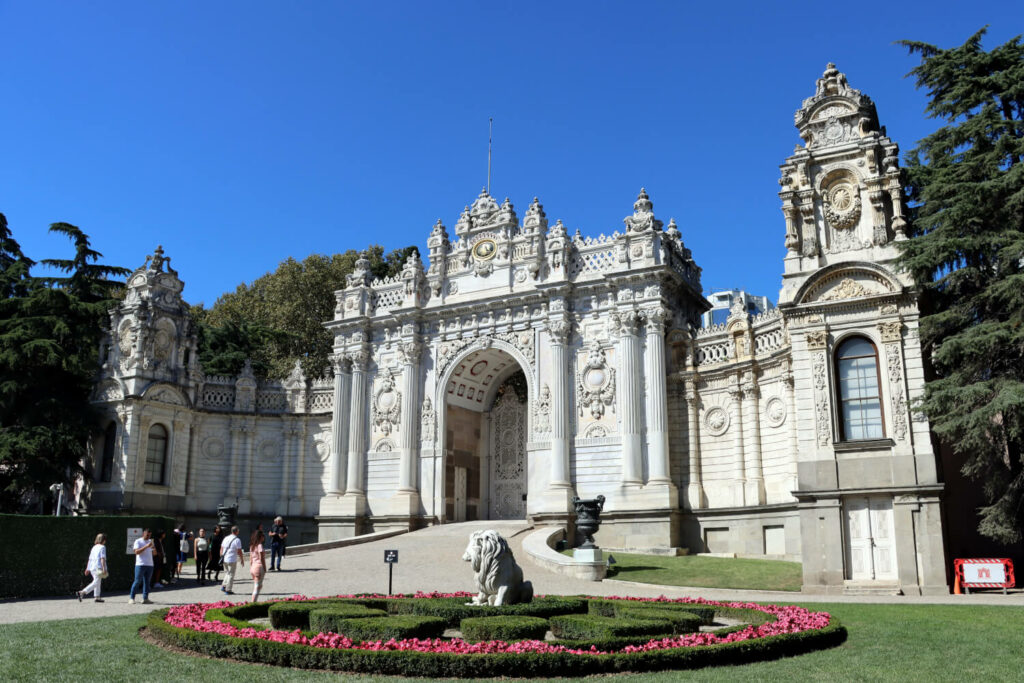
We continued on to the Dolmabahçe Sarayı (Palace). Before meeting our guide, there was a spectacle. Because no one less than the President of the Republic gave his honor in the neighboring Dolmabahçe Mosque. The guide gave us a short introduction and an overview of the palace. Although it is no longer the seat of government, it is used not only as a museum complex but also for representative state occasions. With an area of nearly 15,000 square meters and 285 rooms, 44 halls, 68 toilets and 6 Turkish baths, the Dolmabahçe Palace offers much to explore. Highlights include the Clock Tower, the Crystal Chandelier, the Great Ceremonial Hall, and Atatürk’s deathbed.
Across the Golden Horn and back
Putting our legs in our arms, we crossed the Galata Bridge into the old town of Fatih. Here we had a reservation for the Whirling Dervishes at the Hodjapasha Culture Center. The dervishes belong to a Muslim religious community and practice Sufism. In doing so, they are concerned with the innermost spirituality and personal experience of faith. Sufism emphasizes the individual’s personal relationship with God and the experience of closeness to God through meditation and prayer. This is expressed especially through the dancing and twirling and was performed very authentically in the 1-hour show.
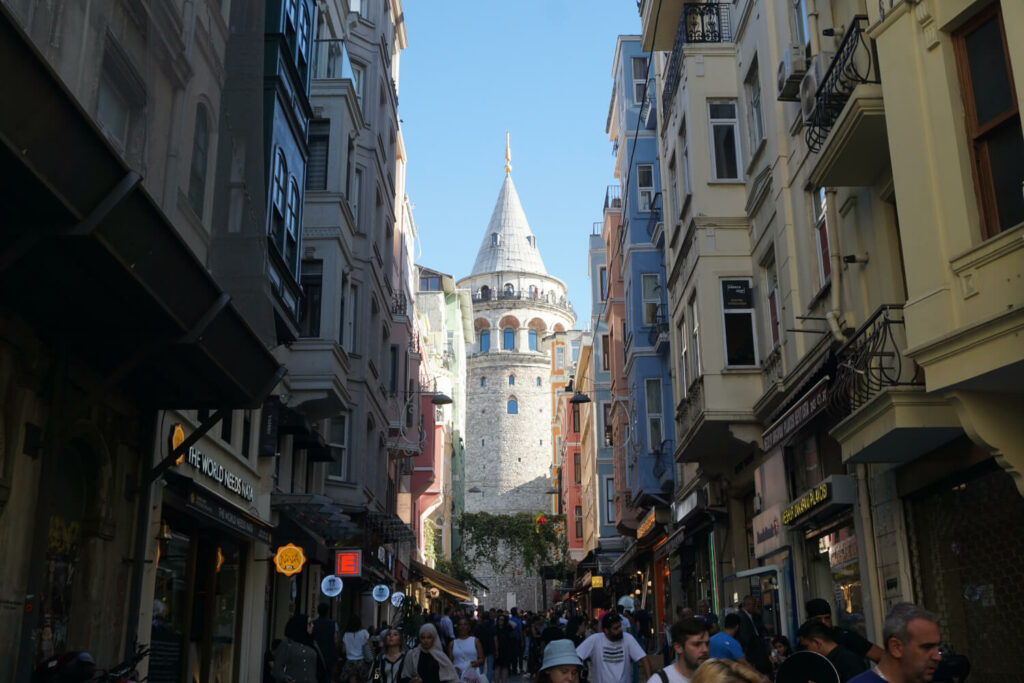
We reached the Galata Tower already at a late hour of the day. Here, too, we reserved our visit in advance. From the more than 60 meter high tower you have a magnificent 360 degree view over Istanbul, the Bosporus and the Golden Horn. Remember to include the photo spot from Büyük Hendek Caddesi of this landmark of the city.
Uphill and downhill
Ever heard of the second oldest subway in the world? You can find it not far from the Galata Tower at the Beyoğlu station with the appropriate name Tünel from 1875. The ride does not take long and takes you over 600 meters, but it offers an impressive experience and is therefore very popular amongst tourists. Furthermore, it can save you the steep climb from the shore up to the Galata Tower.
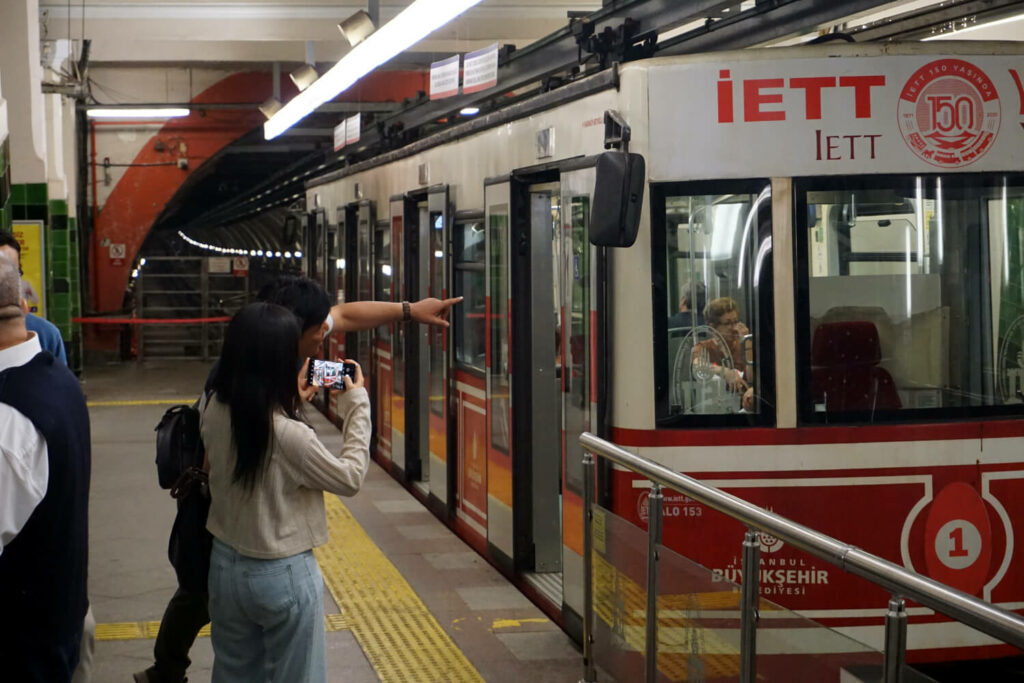
It was already 9 pm and we entered the shopping street Istiklal Caddesi. To describe it as busy would be a massive understatement. A huge stream of people, streetcars and crossing vehicles seemed to stress only us. The rest moved through this anthill quite naturally. If you follow Istiklal Caddesi about 1.5 kilometers then Taksim Square reveals itself to you. This is an important and vibrant public square in the center of Istanbul, known for its dynamic atmosphere and central location.
Life, Love, Wine
We then ended our first day in Istanbul across the street from our hotel at Solera Winery. A great place with delicious food and fairly priced wines. In addition, an unobtrusive service and a feel-good ambience. Not to be compared with the restaurants in the old town, which are specialized in the very special tourist service. We felt comfortable in “our” neighborhood and really had the feeling of being right in the middle of Istanbul’s life.
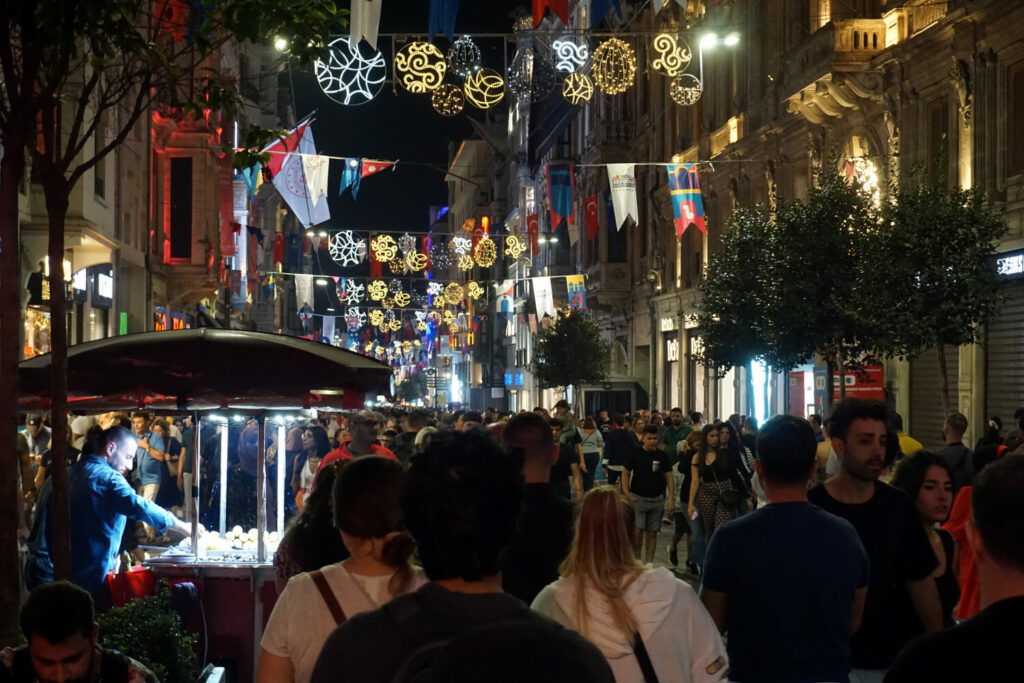
The second day in Istanbul started with a good breakfast. We now wanted to explore the old town with a schedule that was planned down to the last detail. But we did not want to walk the way there and asked the hotel to order us a cab. This came also surprisingly without problems. The driver thought, however, that he could earn us a nice ride to the airport. Fiddlesticks! We wanted to go to the old town and reluctantly he drove off. We could not help smiling. But those who laugh last, laugh best. The traffic jam then forced us to walk a brief distance before reaching our destination.
The heart of the matter
Our first destination was the Sultan Ahmed Mosque (Blue Mosque). We met our guide and first walked across Sultan Ahmet Square. This is where horse races used to take place in ancient Constantinople. Therefore, this square is also called Hippodrome and was the center of the Byzantine or Eastern Roman Empire. Here you can also find the German Fountain from the late 19th century.
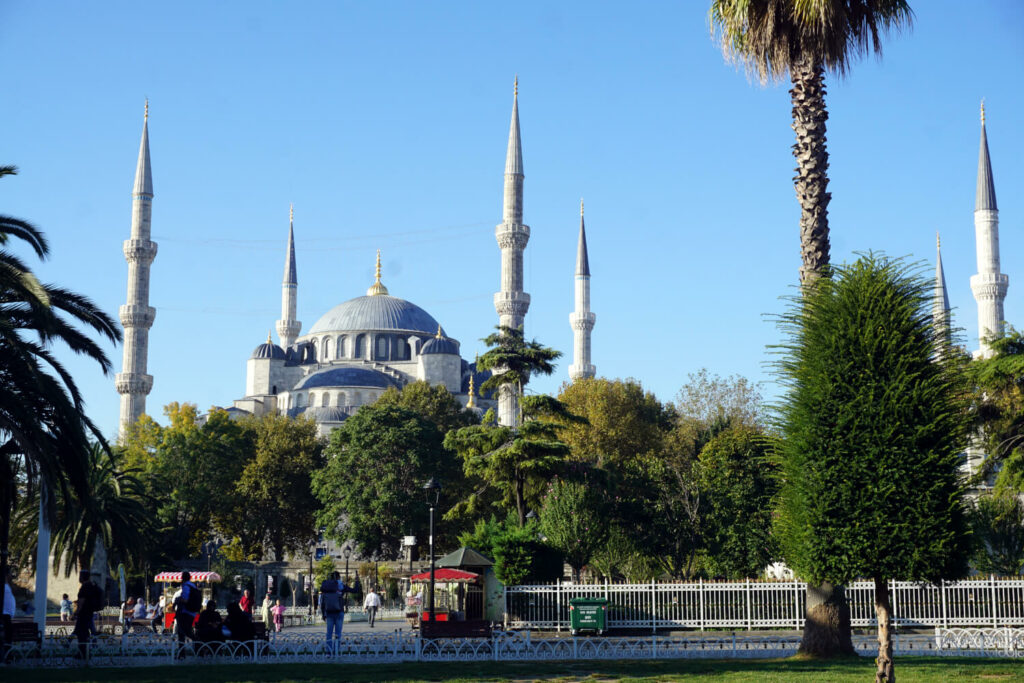
The famous Blue Mosque, built in 1616, unfortunately revealed little of its namesake color to us, as restoration work was being done here. Thus, the tour was limited to 30 minutes. Nevertheless, a visit to this mosque is a must. Not only because of the interior, but also because of the fact that this mosque has 6 minarets (tower for the caller to prayer – muezzin). Only the mosques in Mecca and Medina have more. Mosques in Istanbul, by the way, are for free and therefore independent of any city passes.
Inshallah
On the agenda now was a visit to the Cisterna Basilica (Sunken Palace). We met our guide again at the well-known meeting point (Sultan Ahmet Park and also a great photo spot) and walked a few minutes from the Blue Mosque to this sight, which is not so much a palace and certainly not sunken. The Sunken Palace is in fact a cistern from about the year 540 and it was in late antiquity a kind of reservoir for water. You should plan at least one hour to visit the hall, which is about 140 by 65 meters. The Cisterna Basilica, which has been renovated since 2022, is also famous from movies such as From Russia with Love, The Accidental Spy or the video game Assassin’s Creed.
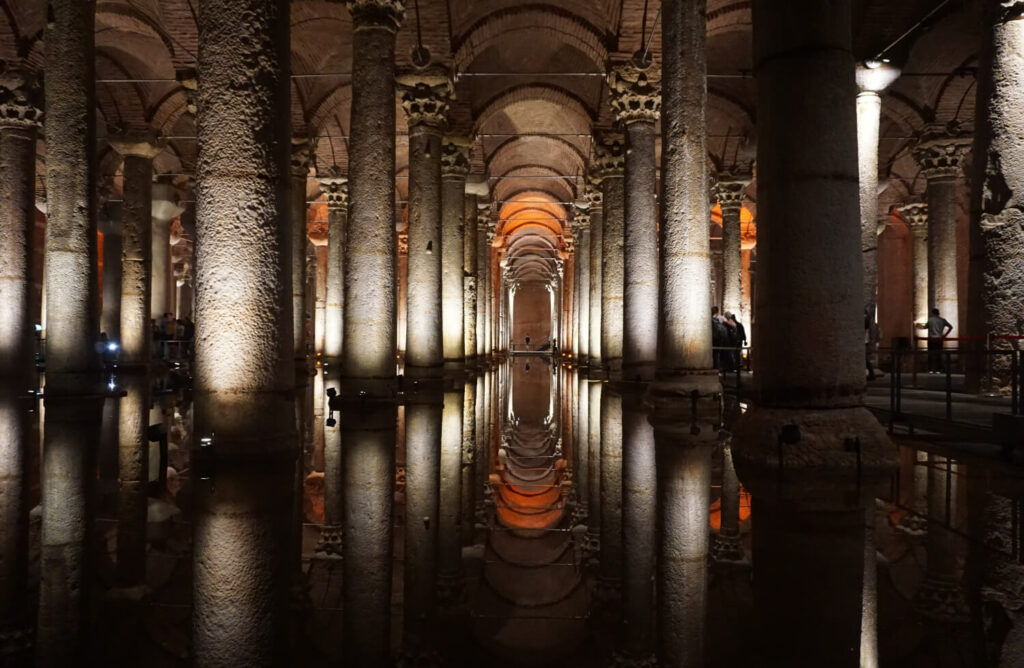
Before heading to the next sight, we took a short break in a café next to the Topkapi Palace. Afterwards, we met our guide again and first had to stand in the long line in front of the entrance. As with most sights, the long lines in front of the entrances are due to security measures – and this is also the case here at Topkapi Palace. This was once the residence and seat of government of the sultans and provided a home for up to 5,000 people. Today, the palace is a museum like the aforementioned Dolmabahçe Palace and is more traditionally built than its later and more European-influenced brother palace to the north. Take at least two hours to visit this huge and impressive area with a total of four outdoor areas and countless buildings. The first outdoor area is free and the others are only accessible with an entrance ticket.
One Thousand and One Nights
Hagia Sophia was our next destination and another insane highlight of Istanbul. Originally built as a Roman Imperial Church in the year 537, it later served as a mosque for 500 years, then again as a museum for just under 90 years, only to become a mosque again in 2020. Everyone wants to get in here, so we had to wait in line for over an hour. Inside, our tour with the guide lasted about 30 minutes before the tourists had to leave due to the upcoming prayer. Basically, you should skip Friday for visiting mosques, because Friday prayer takes place here and most mosques are closed for tourist visits anyway.
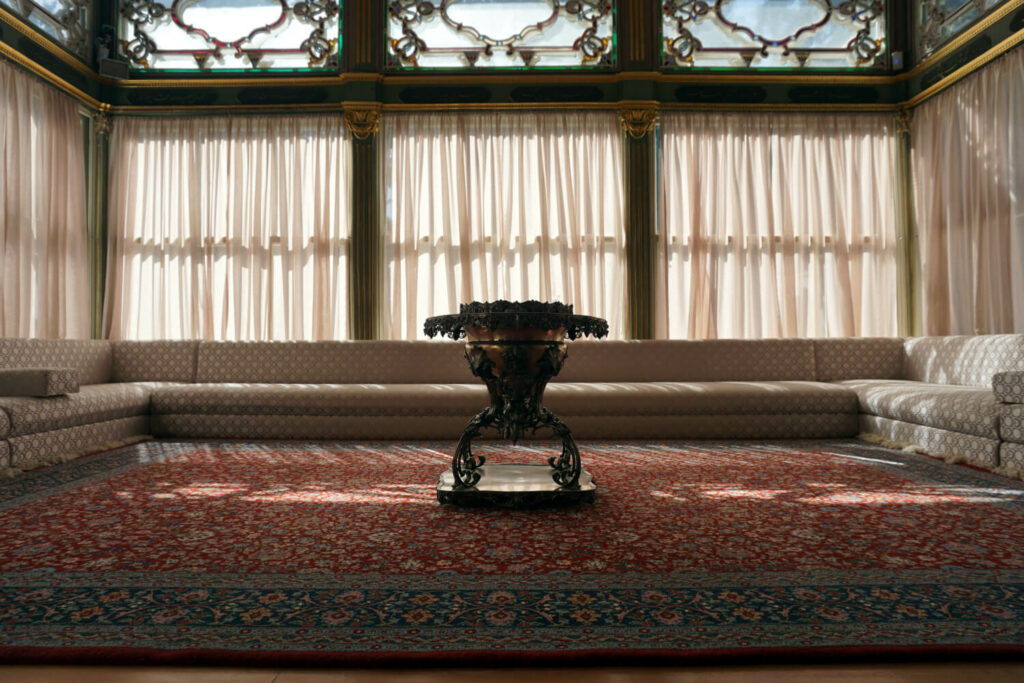
Afternoon now rested on the city like a velvet shroud in which all sounds were softly enveloped. But perhaps we were also quite dull from all the impressions. In any case, the next guided tour was to the Grand Bazaar (Kapalı Çarşı). The tour itself can be saved if you have no specific wishes and questions to the guide. Otherwise, it is simply imposing and touristy to walk through this labyrinth of 4,000 stores.
Between Orient and Occident
Away from all the (justified) hype about the Hagia Sophia and other sights, the Süleymaniye Mosque from the 16th century offers a great view over the city and the bay – the Golden Horn. Here you can expect a magnificent mosque without queuing and waiting. For us, this was a true oasis of peace and contemplation and therefore absolutely recommended.
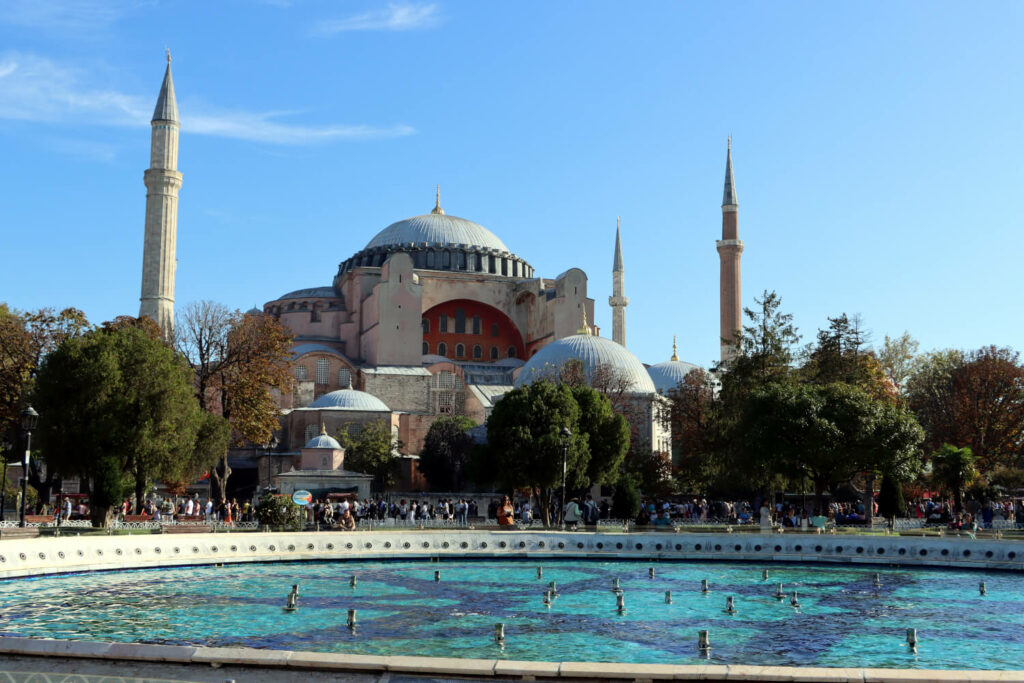
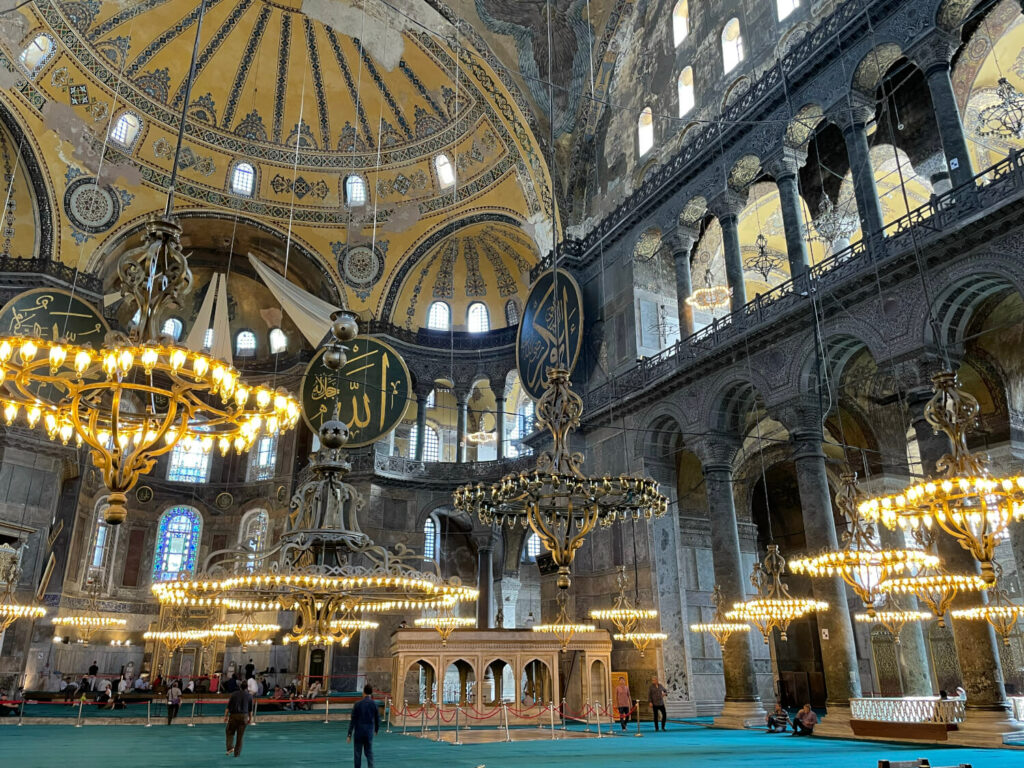
From here, we also spotted numerous rooftop bars and settled into the Mihrişah Cafe Restaurant. It was a great experience to eat above the rooftops of Istanbul and end the day at the foot of the Süleymaniye Mosque. However, we had planned two small stops on our way home. One was the Egyptian Bazaar (Mısır Çarşısı) known for its spices and textiles, which is about 1/10 the size of the Grand Bazaar.
Diversity of culture and history
Next, the Sirkeci Train Station. This is where the famous Orient Express ended on the European side, traveling from Paris to Constantinople or Istanbul and back since 1883. The Orient Express was like a shining arrow, snaking through the landscapes of Europe and Asia, while passengers enjoyed the views and indulged in exquisite food in luxurious compartments. You can easily recreate the glamour of that time in the beautiful station building. Agatha Christie’s detective novel Murder on the Orient Express made a literary record of the train.
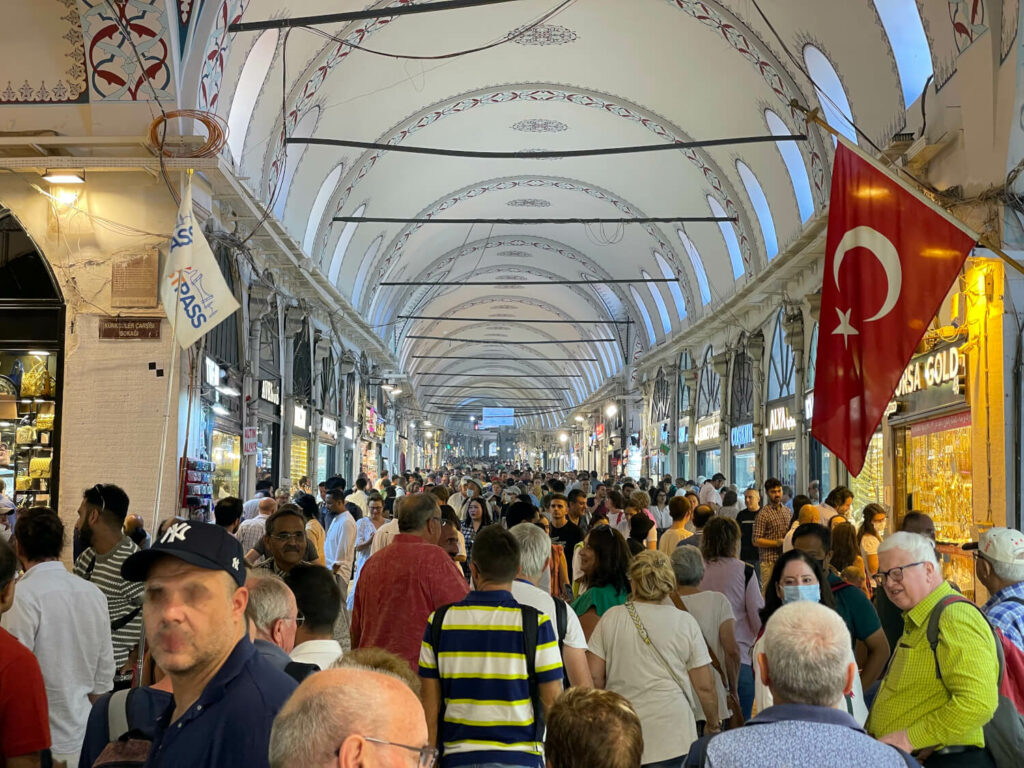
There was a lot to do for the evening program in our hotel district. In addition to bars and clubs, there was plenty going on in the streets. In addition to our “regular” wine bar Solera, there was also the stylish cocktail bar Flekk and the club NOH Radio. Alternatively, get your drink of choice from the kiosk and linger on the street. To us, Istanbul seemed very open, lively and modern. This surprised us, no question about it.
The city full of opportunities and adventures
For our penultimate day, we had actually planned to visit the Kariye Camii (Chora Church). Unfortunately, this was closed due to renovation work. So, we also saved the trip there and the visit to the İstanbul Surları (The Walls of Constantinople). If you have the chance, be sure to visit these two sights and let us know.
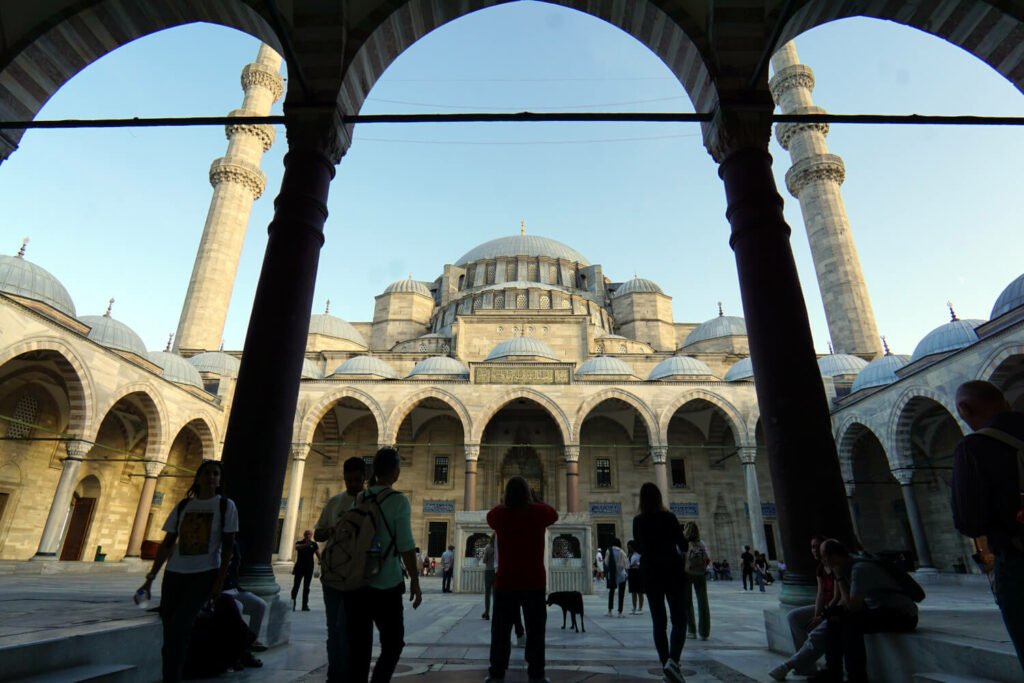
So, we had a quiet start to the day and surprisingly some buffer, which we took advantage of while having a delicious coffee. The morning was like a curtain of rain that spread over the city, bathing everything in a mysterious shimmer. The streets shone, the rain drummed softly and the air smelled of freshness and new beginnings. We breathed deeply. Each breath was like a constant whisper, telling us again and again: Let us live, let us feel that we are there, in this moment, in this breath.
Between the continents
At noon our Bosphorus boat tour was scheduled. Departure was from the Kabataş Station. The Bosphorus as a strait between Europe and Asia and as a connection between the Black Sea and the Sea of Marmara is world famous and should definitely be taken during a visit to Istanbul. The magic of the water as a mirror of the world is especially impressive in summer at the Bosporus. Unfortunately, we could not really see the Maiden’s Tower, because it was scaffolded due to construction work. Maybe you will be luckier than us during your visit.
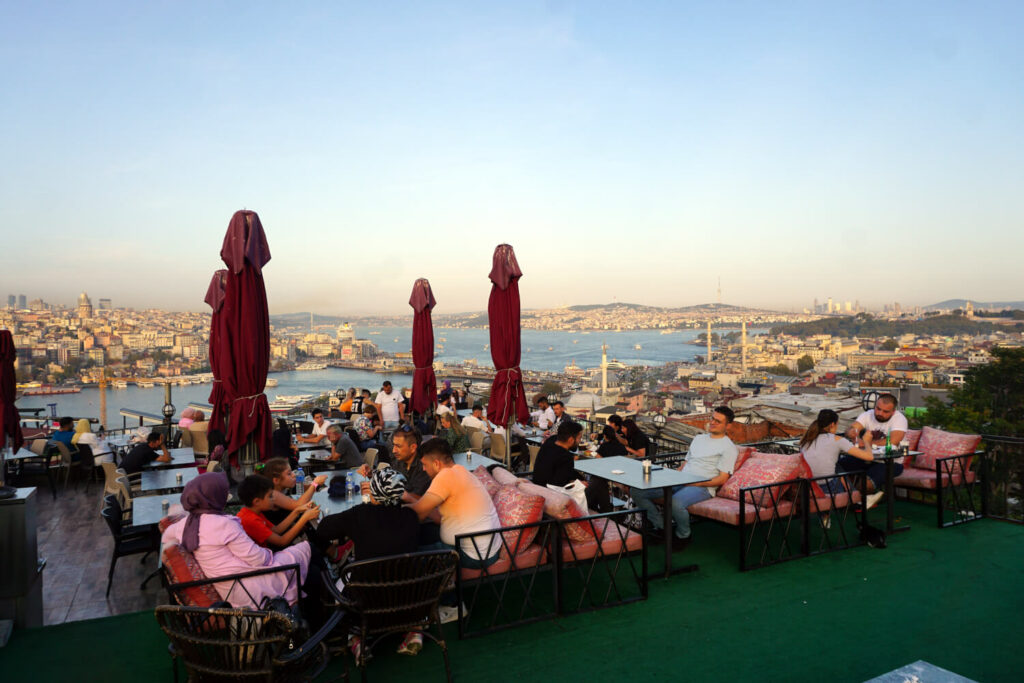
For the afternoon, we booked the Asian Side Walking Tour separately via GetYourGuide*, since it was not included in the Tourist Pass. We were lucky, because we were the only participants of the tour that day. With our guide Emre, we took the ferry from the European side to the Asian side, namely to Kadıköy. The tour went through the streets of this very western neighborhood and Emre took us through the history, culture and culinary world of this part of Istanbul that we didn’t want to leave.
Pearl of the Orient
Highlights are the Umbrella Street (Serasker Caddesi to Ziya Bey Sokak), Şekerci Cafer Erol (pastry shop), the Çocuk Parkı (for sunset) and actually all the restaurants. For example, we ate at the Asirlik Balik Restaurant and visited the Viktor Levi Wine Bar. To list everything here would go beyond the scope. The 1.5 hour tour was packed with information and afterwards we had plenty of time to explore on our own.
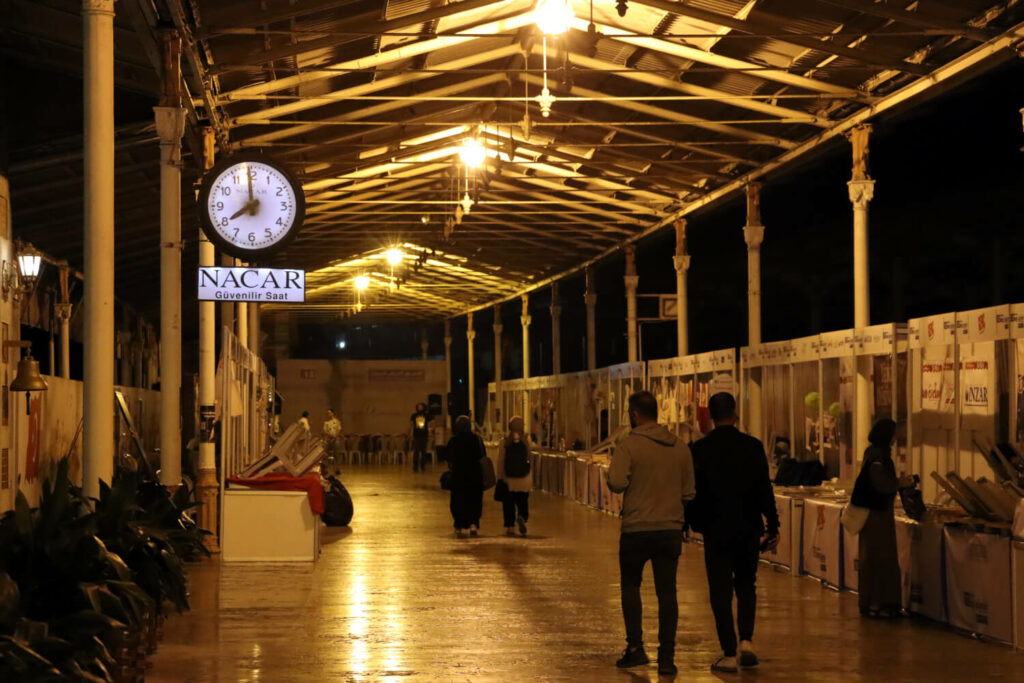
On the day of departure, we had enough time to recover from the efforts of the last days. Adapted from Peter Jackson, it is also true for us that pain and wounds pass, but a travel report is for eternity. So, we sought relaxation in a Turkish bath – the Hamam. For this, we had the suitable locality directly in the proximity of our hotel. It should be the Çukurcuma Hamamı and it was a dream on earth. The Turkish bath is a soothing pleasure that refreshes the body and mind and frees the soul. It is a place of relaxation, a refuge full of warmth and tranquility, where you forget everything around you and surrender to pleasure.
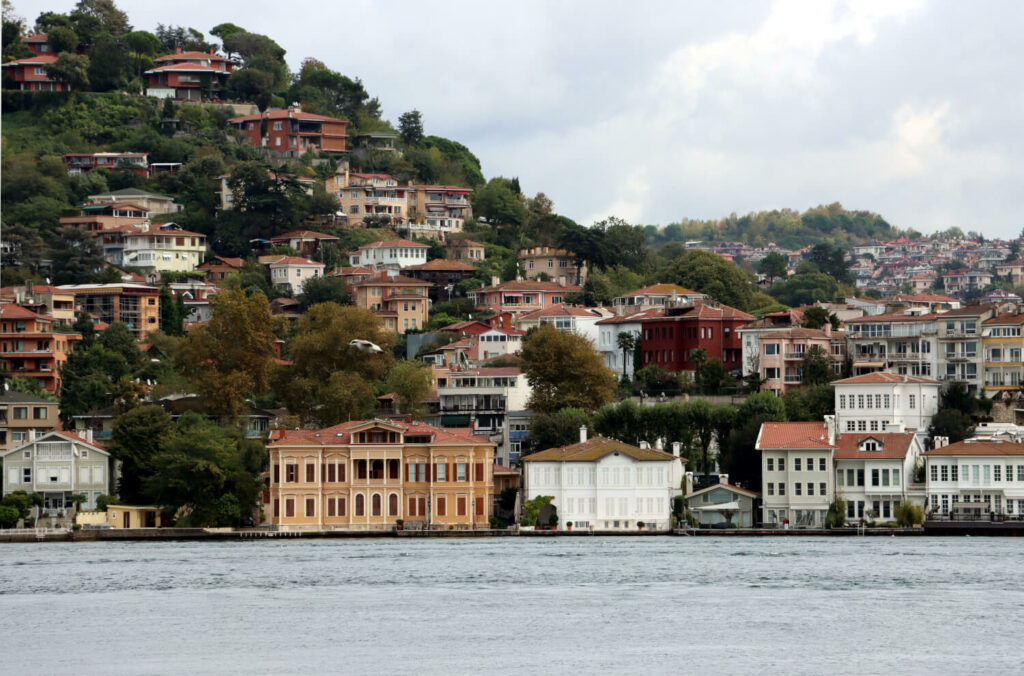
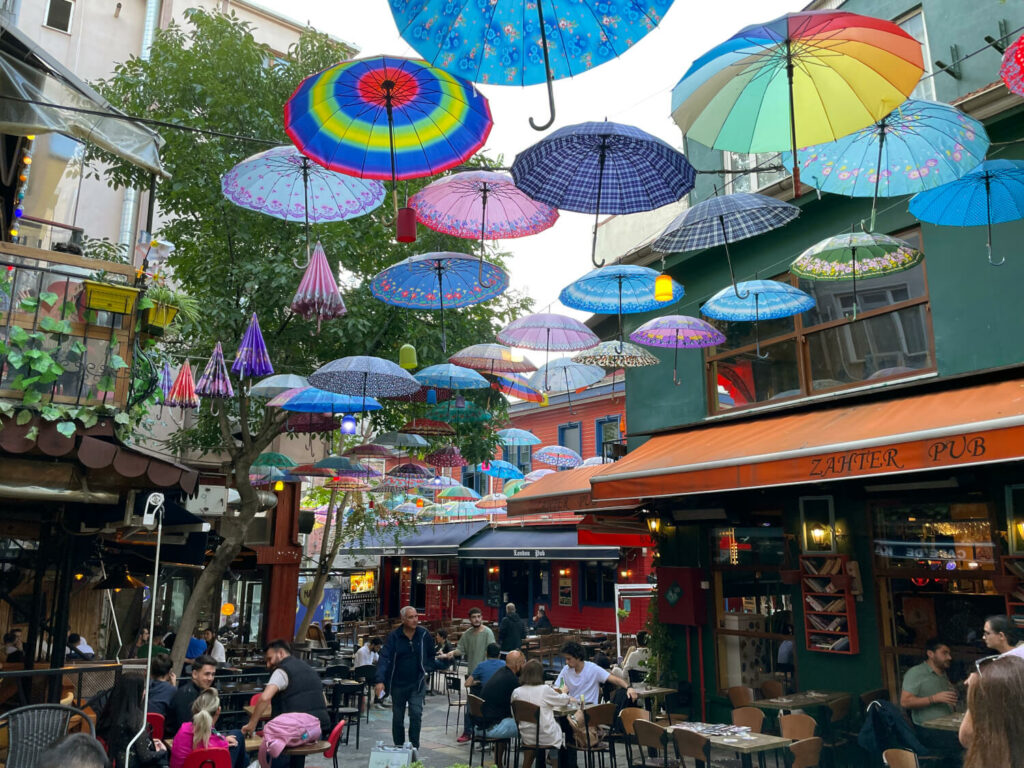
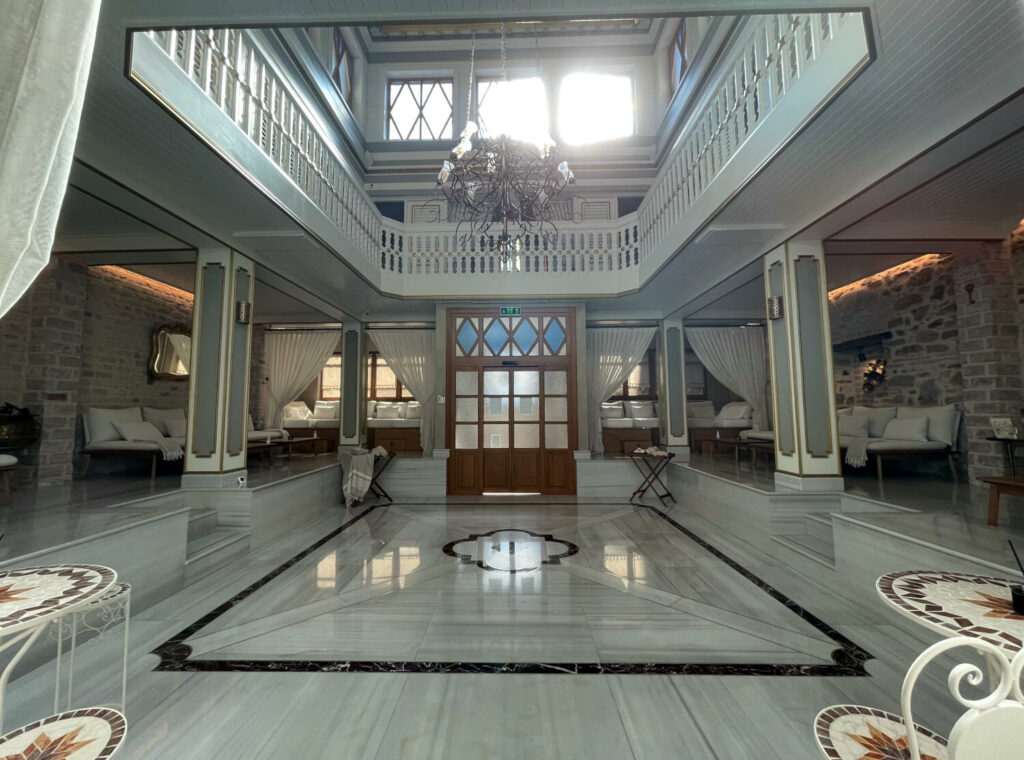
The steam billowing around you; the massages that loosen all your muscles, the fragrant oils that nourish your skin, all this makes the Turkish bath an experience you want to enjoy again and again. It is an oasis of relaxation, a place where you can let yourself go and recharge your batteries. We took this energy with us and headed home. Istanbul is a city that fascinates and inspires again and again, a place full of contrasts, history and culture that gives every visitor unforgettable impressions and experiences.
Ready for Asia? Then read on here.
FAQs
– Galata Tower
– Sultan Ahmed Mosque
– Hagia Sophia
It should be at least three days.
The Istanbul Card is a must when visiting Istanbul. You can purchase this card for a good Euro.
* The links to Check24, Booking.com and Getyourguide contained in this article are so-called affiliate links. With these links, tripination.com receives a commission for mediated purchases. The price does not increase for the customer.
